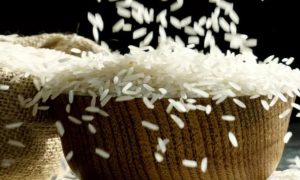Go for the unthinkable; import wheat to curb food prices inflation

Global grain prices are moving up, aided by Russia’s decision to withdraw from an agreement to permit the export of grain from Ukraine from its Black Sea ports and by India’s decision to ban the export of non-basmati rice. Wheat prices are rising in India, too. Agricultural economist Ashok Gulati says the government should import wheat, to signal plentiful domestic availability and dampen expectations. This is sound advice, and in the short term, India should also export the damaged wheat FCI procured this season to meet the world’s need for animal feed, which would release some grain being devoted to animal feed for human consumption.
For medium-term grain price stability, India should help African countries grow more grain locally, drawing on its Green Revolution expertise and the lessons on offer since then on the possible ill effects and preventing or remedying them. This would reduce the surprising dependence on imported grain of the world’s fastest-growing region in terms of population, and win India sizeable goodwill, besides stabilizing foodgrain prices.
India maintains decent stocks of rice and wheat, and some stocks of coarse grains and pulses, to guard against insecurity. But when the stock of any particular grain dips, even if it is above the buffer stocking norms, it gives policymakers the heebie-jeebies, and they take action to boost supplies. The buffer stocking norm for rice as well as for wheat varies over the year, depending on how recently a harvest has happened of the particular grain and how far away that time of the year is from the next harvest.
The opening stock of wheat in the central pool — this would exclude what different states might hold — in August has been 28 million tonnes. This is above, but only just above, the buffer stocking norm of 27.8 million tonnes for July, counting both operational stocks and strategic reserves. Rice availability over the buffer stocking norm has been more liberal and yet the government has banned the export of non-basmati rice.
During the final years of the UPA government, global grain prices soared, even as India stepped up procurement to prepare to meet the increased requirement to meet the obligations under a new National Food Security law passed by Parliament in 2013. Yet, the incumbent food minister, Sharad Pawar, did not release, from the government’s ample stocks, sufficient quantities into the open market, because of delay in ascertaining the requirements to meet the norms of the national food law. The present government would not like to repeat its predecessor’s mistake.
Banning exports is a crude measure, albeit effective in the short run. A variable export tariff is a sounder policy. An even more effective way to contain foodgrain inflation is to let the futures market function, to generate signals about likely price movements and intervene well in advance, with imports combined with higher export taxes or, in case prices are poised to tumble, export subsidies, to push out excess stocks. India has been getting rid of surplus stocks of sugar with subsidies to the tune of ₹10,000 a tonne.
But the political class has been unwilling to let the futures market function in the case of grain. Its approach is strictly dirigiste, with stocking limits, and export and import bans, mixed up incoherently with rising support/procurement prices and subsidies, both of which serve to boost production, often in places unsuited for the crop in question, even when a glut stares the farmer in the face.
It is time India abandoned such crude policy responses and adopted a policy framework that serves both the consumer and the farmer, with the least damage to the exchequer. The goal should be to encourage the cultivation of crops in the agro-climatic zones most suited for them, rather than where political pressures have allowed them to grow at suboptimal cost. Growing sugarcane in arid Maharashtra is a good example of what should not be done, along with the failure to grow sugarcane in the floodplains of Bihar, the terrain best suited for the crop.
Persisting with ever-rising procurement prices for wheat and rice in Northwest India, even when India generally accumulates surplus stocks of grain, but remains import-dependent for oil seeds, is another example of distorted policy.
While matching crops with the terrain best suited for them is a politically arduous long haul, there are some short-term measures the government could take, along with importing wheat to augment domestic stocks and dampen expectations of a price rise.
Because of unseasonal rain in the most recent harvest season for wheat, a lot of wheat on the stalk got damaged just before harvest. The government procured this damaged wheat, nevertheless. Now, at a time when wheat prices are climbing across the world, the government should export this wheat — there is a market for wheat as animal feed. Once this is available, hopefully, some wheat fit for human consumption would be released from animal feed makers, easing some price pressure in general.
In addition, there is a vital need to increase production of wheat in Africa, large swathes of which depend on the UN Food Programme or other sources of import, such as from Ukraine and Russia, for their requirement of wheat. The UN forecast is that Africa would account for 1.2 billion of the addition of 1.9 billion to the total human population between 2020 and 2050. If all the additional grain needed to feed these many more people has to be imported from elsewhere, it would keep grain prices high for everyone, including in India. The only way to address this problem is to grow more wheat in Africa.
With its experience of having conducted a Green Revolution to end its dependence on imports to feed its people, India is well placed to help African nations achieve this goal. India could work with African governments to set up model farms on private land, and help with the policy framework incorporating high-yield varieties, better crop husbandry, support prices, support prices made good with government procurement, optimal levels of subsidy for inputs combined with full costing of water for irrigation, whether delivered via canals or pumped out of the ground, an agricultural university that incorporates the research that India has segregated into separate research institutes, and functional markets for commodity futures and options.
African farms could be encouraged, as well, to grow the crops such as pulses and oilseeds, of which India faces a shortage.
This would dovetail into India’s policy of championing the Global South, while also helping stabilize grain prices long-term, and ease price pressures on oil and protein crops.













